When it comes to superheroes behaving badly, Amazon Prime Video’s raunchy series The Boys takes the cake. Based on the graphic novel by Garth Ennis and Darick Robertson, The Boys follows a group of corrupt superheroes known as The Seven who do the evil bidding for their parent company, Vought International, which condones their extreme, unapologetic behavior.
The “team” is led by the psychotic Homelander (Antony Starr), who is joined by Starlight (Erin Moriarty), A-Train (Jessie T. Usher), The Deep (Chace Crawford), and Queen Maeve (Dominique McElligott), as well as newbies Soldier Boy (Jensen Ackles) and Crimson Countess (Laurie Holden), to name just a few of the sleazy superheroes abusing their powers for anything but good. There’s no need to get into the deranged specifics here, but suffice it to say, The Seven are not the warm and fuzzy protectors of the universe, and the vigilante boys — Billy Butcher (Karl Urban), Hughie (Jack Quaid), Mother’s Milk (Laz Alonso) and Frenchie (Tomer Capone) — are still out to destroy them.
Taking on the task of dressing these irreverent superheroes and villains is Laura Jean Shannon, aka L.J., who holds the mantle of Superhero/Specialty Costume Designer on The Boys, as well as that of Associate Producer. A self-described geek, L.J. has made her mark designing costumes for comic book projects such as Iron Man, Black Lightning, Titans, Doom Patrol, and Stargirl, as well as the pilots for Preacher and Futureman. She also worked with Director Jon Favreau on both Chef and The Jungle Book, while Iron Man earned her a CDG Award for Excellence in Contemporary Film Design. She first worked with Favreau on Elf, and her designs were featured in the costume exhibition “50 Designers/50 Costumes: Concept to Character,” which was curated by the Academy of Motion Picture Arts and Sciences.
Below the Line recently spoke with Laura Jean Shannon via Zoom video from her home in New York, where she asked us to call her L.J. As the Costume Designer for The Boys since 2019, she had many stories to tell, including her own origin story, which explains why superhero costumes are in her wheelhouse. We discussed her early inspirations for The Boys, as well as how the show’s costumes have evolved over the years. Shannon took us through the designs stitch by stitch, detailing how they were put together from concept to practicality, including some tricks of the trade in keeping her actors cool from head to toe during filming.
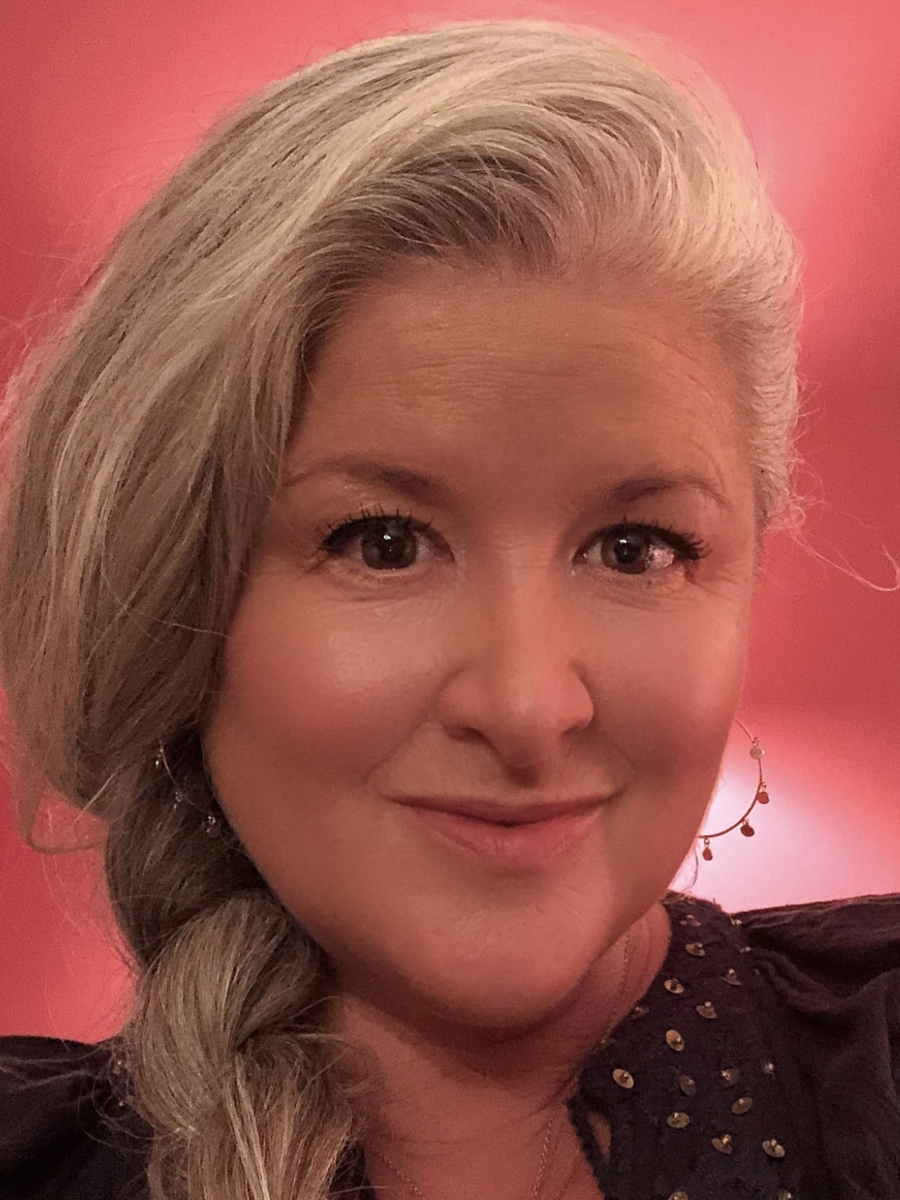
Below the Line: So L.J., how did you initially get involved with The Boys?
Laura Jean Shannon: So, a million years ago, I did a little pilot [called] Preacher, which was also based [on] Garth Ennis’ crazy, mixed-up brainchildren in a graphic novel he did. I remember when he came to visit us on set, and I said to him, ‘You are demented… and thank you because it makes for fun work for us.’ I don’t think it was the first time I worked with [Creators] Seth Rogen and Evan Goldberg, but it certainly was a memorable time.
Then later, when we were working on the Futureman pilot, I remembered reading in the trades about Eric Kripke, Seth, and Evan doing The Boys at some point, and I got really fired up. I went to set, and I was like, ‘You guys, this is awesome.’ Time went by, and I had actually worked with Kripke, sort of helping him and a director friend, on the down low, get over some creative hump that they were facing on a project. Kripke always remembered me after that and would call me for projects, and the stars just hadn’t aligned until I was his very first call for the project because he knew I had superhero costume design experience and he wanted to pick my brain in the early days.
BTL: What was your superhero costume background?
Shannon: At the time, I had done a bunch of superhero movies. I designed Iron Man and Blade: Trinity and several other graphic novel projects like Scott Pilgrim vs. the World, so it’s a genre that I’m very interested in and that’s in my wheelhouse. Honestly, I just love it. I’m a geek, so it’s my favorite.
BTL: What is it about you that gravitated to this kind of costume design?
Shannon: When I was a little kid, I used to always ask my dad to get comic books at the convenience store for me and my brother. I went to see the original Star Wars movie, like, 16 times in the cinema. My parents got me an art book, and I would just pore over the images of the creatures, the droids, and the costumes. I’ve just always been sparked by fantasy and science fiction. It’s sort of my way of enjoying releasing my brain from the day-to-day. In fact, I say that Star Trek is my family that travels with me everywhere I go because I’ve fallen asleep to them in Korea, Australia, Japan, you name it. I’ve seen every one 550 times in every single one of the incarnations.
BTL: How did you turn that passion into a realized career?
Shannon: I studied sculpture and graphic design in college, and I was a model maker for a short while for Doug Trumbull, the granddaddy of special effects. It’s just always been of interest to me, and so as a costume designer, my journey was one where I made sure I experienced all different genres, you know — period, contemporary fantasy, and science fiction. I always knew that I wanted my end game to be something that had to do more with engineering and fully custom design, where I build things. I’ve always liked to push the envelope and kind of break the rules. Superhero costume design is a really perfect fit for me in terms of the way that my mind works as a designer and then also the way that my heart and soul work just as a geek.
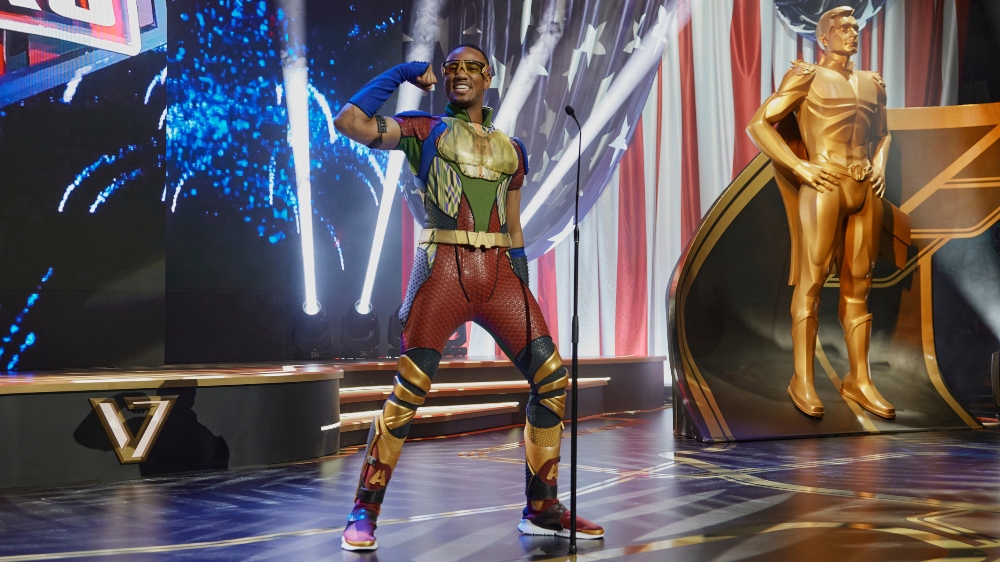
BTL: When you met with the boys about The Boys, what were those initial inspirations, and were they on board with everything that you gave them?
Shannon: So when I first started talking to Kripke, it was really early days, and the initial conversations were sort of logistical in nature. He wanted to get my input on roughly what superhero suits cost and how long they take to build. At the time, I was in the midst of designing several other superhero projects for the DC universe.
What was really fun is that he did want me to sort of be the co-architect of the Vought Cinematic Universe right out of the gate. So Kripke, Seth, Evan, and I had lots of conversations in the early days about how we really wanted to create a legitimate superhero universe that could play with the big guys.
BTL: These are not your typical superheroes.
Shannon: Though the show has comedic aspects to it, the comedy comes from the perverse hyperrealism of the situations that our characters are put in through the writing and the acting, and the work that my team and I do was not meant to be a joke. It had to be legit. So there are things where we push the envelope. There are some areas where we might have pushed an aesthetic in one direction a little further than we would on a different show. It was all done to highlight what’s really being done already on superhero shows.
What’s great about our superhero characters is that we really pull the curtain back and see them in situations that you don’t see superheroes in superhero movies, especially where they’re heroic. After all, we’re seeing Starlight pee in Episode 1! It was a really fun exploration in terms of talking about how reality already created an environment for us to be slightly over the top, but it had to still be grounded in the real world and have a sort of gravitas to the designs.
BTL: Can you describe how you first delve into a design?
Shannon: So the way that I work with my team is that I start off with my concept artist and we do rows of pencil sketches. I remember the first big meeting with Kripke, where we went to his conference room and laid out Starlight in a pilot presentation to get the show greenlit. So, at first, we chose three characters — Homelander, Starlight, and A-Train — that I designed for that.
We had some fabric swatches, and we didn’t actually create the custom fabrics for them, but we did create some of the patterns for the custom fabrics and then showed examples of what high-density screen printing looks like or what a sculpted element looks like so that Amazon could really wrap their heads around our intentions.
For Starlight, we laid all of these sheets of paper out like paper dolls, and they were all numbered. Kripke says, ‘I like the top of #10 and the bottom of #3, and the boots of #1,’ and then my concept artist would make an amalgam of those, and then we’d present that.
My process with directors and showrunners is always to give them lots of options and to have them be a part of the process so that the process ends up being really collaborative and smooth, so by the time we get to a rendering, everybody knows what it’s going to be and they already know they’re going to love it. Then we send it to the studio and the network, and we might get a few notes from them and maybe tweak a few things.
But I feel like this is one of those projects where, right out of the gate, all of the right people were assembled to work together because we have this hive mind about what the vision is for the project. Knock on wood, it’s been sort of a love fest and a really fun, exciting journey with a lot of positivity and a lot of acceptance of cool, fun ideas.
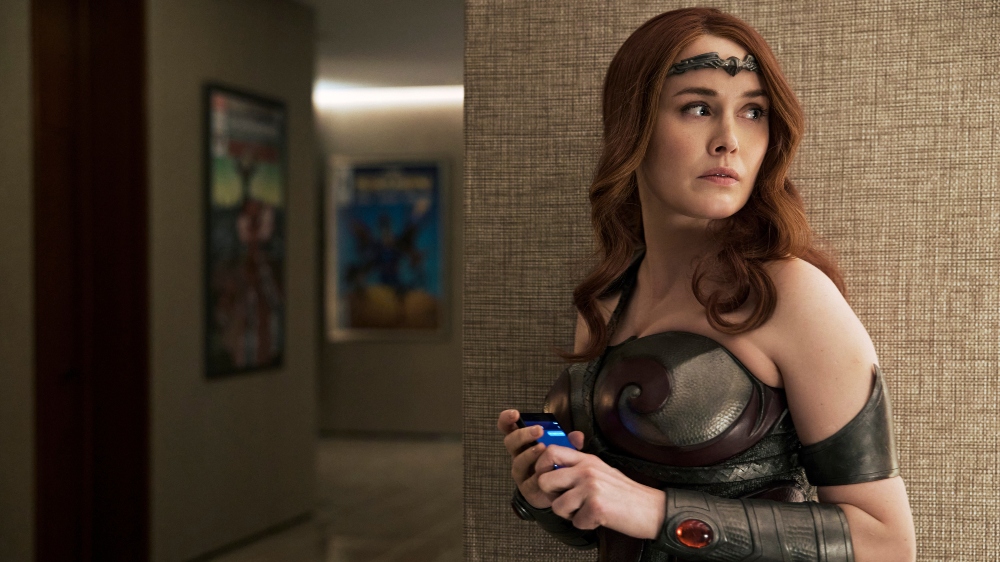
BTL: How did Homelander’s suit evolve over the seasons and what was the initial inspiration?
Shannon: With Ant (Antony Starr), what’s changed from Season 1 to now is that, like any technology, the materials and processes that we use to build super suits also change. So things that we used in Season 1 aren’t always the best viable option now for Season 3.
One of the things that the fans might get a kick out of is something that we do for all suits that are hot, and Homelander’s suit certainly is because it has a full muscle understructure, so we actually fit the actor with a cooling suit, which is made with little tubes that you push freezing cold water through. So Ant has his little purse, which I call his purse, and he walks around holding it, which is really his little satchel that has freezing cold water in it.
We’ve made the zipper separate in such a way that he can pull out the little apparatus, and the team plugs him in, and a little cool water goes throughout his body to cool him down. It’s so funny because he’s a buddy of mine, and he’s, like, a totally chill dude who rolls in [wearing] shorts and flip flops for his fittings, and then when you watch him in the show, he is just so bloody terrifying.
One of the things that was really important for his costume is that even though it’s a fairly complex suit to wear, just by nature of the way that it had to be structured, we had to create it in such a way that he could get it on and off pretty quickly. So we worked really hard to dial in all of those fit details for him for the maximum amount of comfort within the confines and the constructs of what his suit actually could provide.
The reason why it was so important that the suit be so complex in its build parameters is [that] he’s Homelander, and he has to be this menacing, larger-than-life presence who, in the beginning, is very all-American, and that shift kind of happens as we get to know him. When we developed that character for the pilot presentation, one of the things that we dove deeply into was research for character development. I pulled up a lot of iconography from Nazi Germany, and basically, if you look at his Eagle Belt, it’s much more German than American in its inspiration. His fabric is made out of a stretch gabardine, so it’s like a military uniform type of look and feel, but it has stretch to it so that we could actually adhere it to his muscle structure and sculpt in all of those classic Homelander muscles. The fabric itself has a high-density screen print of a repeat of eagles and shields on it.
BTL: Let’s talk about Starlight and the evolution of her costume.
Shannon: One of the classic things that we did in Season 1 that then moved into Seasons 2 and 3 was [that we] played with how Starlight went from being sort of homespun and innocent, and then she was branded by Vought, and they sort of hypersexualized her. So she went from wearing her Starlight 1.0 costume, which was sort of wholesome and sweet, and then swiftly moved into a souped-up bathing suit for her Starlight 2.0 look, which brought her more in line with what we were already seeing with Queen Maeve’s design. It was definitely intentional to select Queen Maeve, showing a lot of skin. When we designed Starlight 2.0, we took a lot of cues from what was in the books.
BTL: Does that sit okay with you as a woman — to get sexy like that when it comes to costuming superheroes?
Shannon: That’s a really good question. That was the iteration of the character that we later see that Vought kind of objectifies. It was intentional that she was clearly uncomfortable that she was being objectified by Vought and said she wasn’t going to wear it, but then was given the ultimatum that if she didn’t wear the suit, then she wasn’t in the Seven. That’s sort of the core of the story that we tell in all of the characters in The Boys and sort of the arc of the show itself, which is shining a light on aspects of our society and the world that we live in that are wrong, [and] frankly, perverse and grotesque. So this is my way, as a woman, of actually making a statement. It’s not like I am putting a woman in an overly hypersexualized costume because I want to show her legs because I think they’re hot. Vought wants to show her legs because people will think they’re hot. That’s really the story that we’re telling.
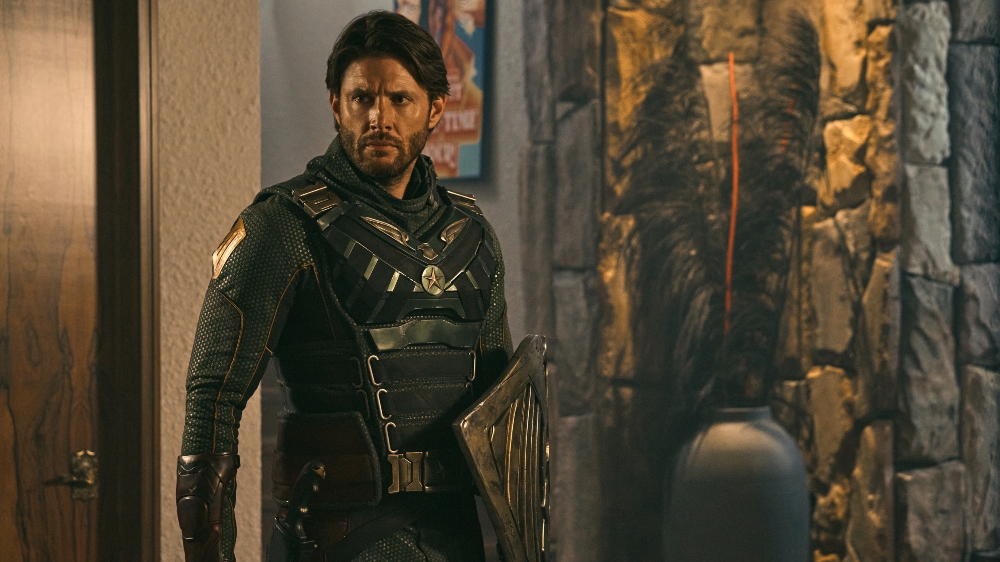
BTL: What about the characters that are new to Season 3, such as Soldier Boy and Crimson Countess? Can you talk about designing their costumes?
Shannon: Jensen [Ackles] was a lovely man to work with. What a sweetheart. He is also one of those actors who hangs all of his clothing after every fitting. Soldier Boy was our biggest addition. I had so much fun on this. Gina Domenico has been my Concept Artist for almost all of the characters on the show. We brought in Greg Hopwood to also work with us for Season 3 because we had so many characters, and he was the Concept Artist [who] worked with me on this character.
He had such a ball because one of the things that we do on the super suits for our characters that we design is that we design them from head to toe. So not only do we design the underpinnings, like BDU-inspired pants and jackets, but we also do the vest, the shield, the knife, and the helmet — soup to nuts because it’s a package deal. It’s fun because, as we’re designing, all of those aspects come to life.
With this particular character, we wanted him to be like the Marlboro Man meets a soldier. He’s very toxically masculine. He looks at a character like Homelander and thinks that he’s a pussycat in tights [laughs]. He’s a man, and that vibe is sort of reflected in the choices that we made [and] in the way that we constructed his costume, which was also technically built in the 1980s. Because this is the suit that he gets back from the legend, who was holding the suit while Soldier Boy’s been held captive in Russia all this time and presumed dead.
That was probably the trickiest part — making sure that all of the choices we made for this character made sense [and] that it could have been built in the 1980s but still looked cool enough that it played well with our contemporary superheroes and all of the bells and whistles that they have on their suits. For him, we used a lot of suede elements on his gloves and his spats for his boots, which were like a Lumberjack store-bought boot that we then put the spat over, as opposed to all of the things that we’re creating for the superheroes in our contemporary storyline that are all pretty much custom made.
The other thing that we did with him was with his fabric. We put just a little sparkle in his star repeat since he’s in a darker tone. We wanted him to be sort of grounded and masculine, but we still wanted the suit to play with the light in a really beautiful way. I have to say that that was something that made me really happy when I watched it projected on a big screen — how that really did capture the light.
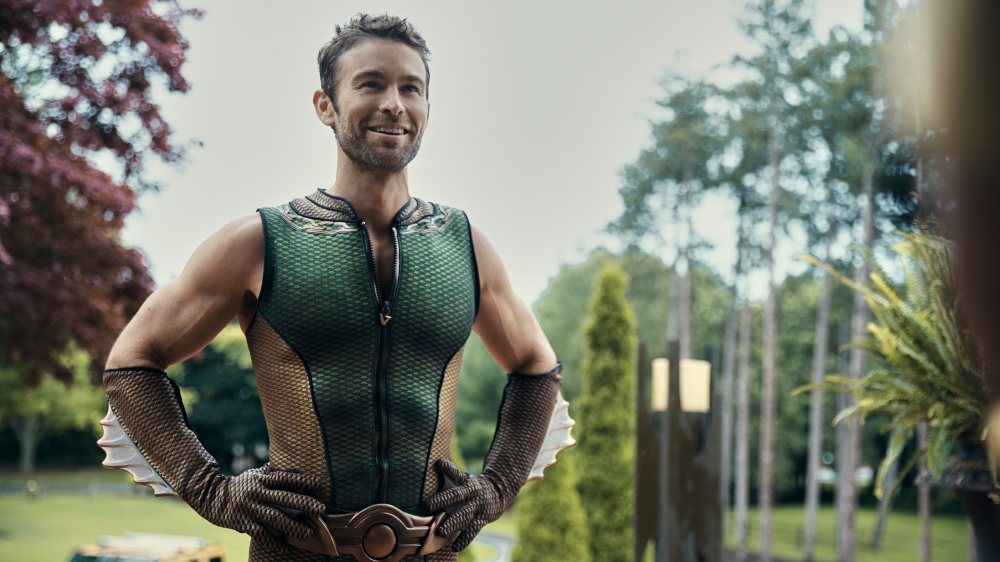
BTL: Lastly, can you talk about Crimson Countess’ costume design?
Shannon: This was also a throwback to the ’80s. We have the flashback sequence with all of these characters, and what we needed to do was make something that she could wear back in the ’80s, looking young. And then in contemporary times, she looks a little older because she wears it in her review show. Because it was a suit that was built in the ’80s, we went back to using some leather aspects, so there are sculpted elements and custom fabrics, but we really laid into dialing back the clock [in terms of] some of the ways that we built this costume.
[For example], her boots are super high, and they’re made out of leather. It’s something that can play in a modern arena but also has just a little bit of a nod to being steeped in the ’80s. The rich color was something that was really fun to play with. With hers, one of the things that we always keep in mind is that oftentimes, supersuits are shot in low lighting or action. So it’s really fun to make sure that you play with the textural and lighting aspects of all of the materials, and it just elevates the suit.
Supersuits are meant to be super, and they’re worn by super-abled humans, so you need to elevate and customize all of the things that you build the suits out of. You do a paint effect on everything, so [for] the Crimson Countess’ suit, we started with a custom high-density screen-printed fabric, custom perforated leather, and sculpted elements that have an automotive paint job. We constructed the suit out of all of those things, and then after the suit was constructed and fitted to her within an inch of her life, we sent it over to our textile artists, and they gave it a paint job. I personally did some of the painting on it because it’s tricky trying to paint the abs on a female superhero!
BTL: At the end of the day, what is the best feedback that you’ve received for your work?
Shannon: I have to say, whenever we build a suit, we can’t wait to see what the cosplay [community] does with it. This last Comic-Con, I was in San Diego, and there was a Queen Maeve who was amazing. I walked up to her and said, ‘That’s a really great Queen Maeve, dude!’ And she looked at me, and she went, ‘Oh my God, you’re L.J.’ She actually knew me and my work and then did this amazing job, just really nailing it.
We really take our job seriously on all levels, but when it comes to the fans, it really means a lot to us that these characters are really important to people — especially on this show, for so many reasons. I think it’s a really great outlet for people to be able to not only have fun but also have some sort of social justice element to it. Also, through the pandemic and everything, people are able to have a show they can kind of immerse themselves in. I think it’s just a special show, and I’m really proud to be a part of it.
Season 3 of The Boys is now streaming on Prime Video. Season 4 wrapped production in mid-April, so look for it in the months ahead.





